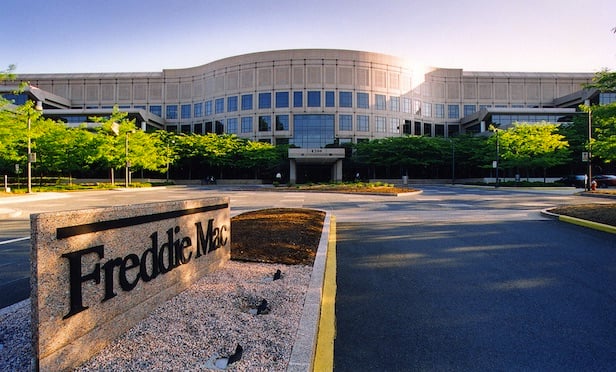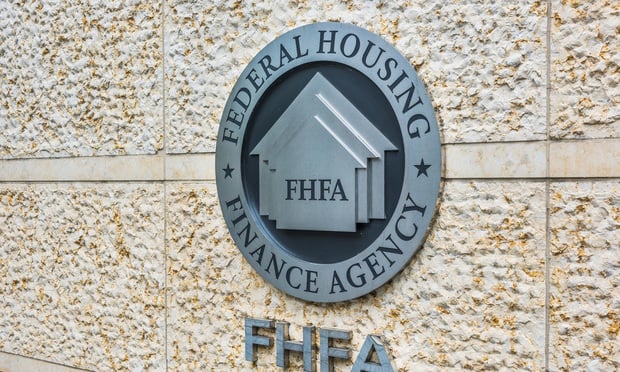- S&P headquarters in Lower Manhattan
NEW YORK CITY—The question of how, or if, borrowers will be able to refinance the nearly $120 billion in CMBS loans maturing through 2018 is on the minds of market participants, including the ratings agencies. S&P Global Ratings said Friday that some $12 billion of the $92 billion of loans maturing during 2017 alone could default and end up in special servicing. Projections of lower deal volume next year and the new risk-retention rule, which takes effect on Dec. 24, could pose further challenges.
“Our CMBS surveillance group has reported that $119 billion of CMBS conduit/fusion loans will mature between the fourth quarter of 2016 and '18,” says S&P credit analyst Steven Altman. “With an anticipated 13% default rate on the $92 billion of 2007 maturities alone, an additional $12 billion of 2007 loan maturities may end up transferring to special servicing. Applying the same 13% default rate to the entire $119 billion would lead to more than $15 billion of aggregate loan transfers to special servicers.”
Altman notes that active special servicing dollar volumes have decreased substantially from their 2011 zenith, but rose again during the course of this year, “largely because of the substantial maturities associated with loans originated during 2006 and 2007 that have been unable to refinance. This phenomenon is expected to accelerate through '18 as a greater portion of these pre-crisis vintages mature.”
While full payoffs were the most prevalent CMBS special servicing loan resolution type in 2015—and remained prominent during the first half of this year—S&P says this is subject to change. In addition, while average special servicer resolution times have been declining since 2014, additional improvement in resolution times are unlikely to occur if full payoffs become less frequent, according to S&P.
In a report issued last week, Morningstar Credit Ratings noted that CMBS loans maturing this month may suffer from a decrease in liquidity as issuers wrestle with the implications of the risk-retention rule. The rule, which was mandated under the Dodd-Frank Wall Street Reform and Consumer Protection Act, may hamper the refinancing of loans as the crest of the CMBS maturity wave looms next year, with $88.92 billion of non-defeased CMBS loans scheduled to mature in '17.
Furthermore, Morningstar says, “The potential liquidity contraction will add to the refinancing challenge of '07-vintage loans, many of which are of lower credit quality, underwritten with overly optimistic cash flow assumptions during the market's peak of 2006-07.”
And while Kroll Bond Rating Agency says it remains “cautious, but constructive on CMBS issuance, property fundamentals and collateral performance,” the ratings agency also notes that '17 could bring another year of volume declines in new issues. “After six consecutive years of issuance growth, the CMBS market expansion came to an abrupt halt in 2016,” according to KBRA's outlook report for securitized commercial mortgages.
KBRA says that private label CMBS is expected to end this year “within a range of about $65 billion to $70 billion, approximately 30% lower than last year's $95.8 billion”—a figure that itself represented a disappointment after '15 began with projections of $125 billion in volume. “Despite what could be a slow start to the year, we believe that new CMBS private label issuance in '17 could end the year within a range of $55 billion to $65 billion, slightly below '16 levels.” Moreover, KBRA expects CMBS to capture “a fair amount of volume” from next year's maturities, especially with banks pulling back on their commercial real estate lending.
- S&P headquarters in Lower Manhattan
“Our CMBS surveillance group has reported that $119 billion of CMBS conduit/fusion loans will mature between the fourth quarter of 2016 and '18,” says S&P credit analyst Steven Altman. “With an anticipated 13% default rate on the $92 billion of 2007 maturities alone, an additional $12 billion of 2007 loan maturities may end up transferring to special servicing. Applying the same 13% default rate to the entire $119 billion would lead to more than $15 billion of aggregate loan transfers to special servicers.”
Altman notes that active special servicing dollar volumes have decreased substantially from their 2011 zenith, but rose again during the course of this year, “largely because of the substantial maturities associated with loans originated during 2006 and 2007 that have been unable to refinance. This phenomenon is expected to accelerate through '18 as a greater portion of these pre-crisis vintages mature.”
While full payoffs were the most prevalent CMBS special servicing loan resolution type in 2015—and remained prominent during the first half of this year—S&P says this is subject to change. In addition, while average special servicer resolution times have been declining since 2014, additional improvement in resolution times are unlikely to occur if full payoffs become less frequent, according to S&P.
In a report issued last week, Morningstar Credit Ratings noted that CMBS loans maturing this month may suffer from a decrease in liquidity as issuers wrestle with the implications of the risk-retention rule. The rule, which was mandated under the Dodd-Frank Wall Street Reform and Consumer Protection Act, may hamper the refinancing of loans as the crest of the CMBS maturity wave looms next year, with $88.92 billion of non-defeased CMBS loans scheduled to mature in '17.
Furthermore, Morningstar says, “The potential liquidity contraction will add to the refinancing challenge of '07-vintage loans, many of which are of lower credit quality, underwritten with overly optimistic cash flow assumptions during the market's peak of 2006-07.”
And while Kroll Bond Rating Agency says it remains “cautious, but constructive on CMBS issuance, property fundamentals and collateral performance,” the ratings agency also notes that '17 could bring another year of volume declines in new issues. “After six consecutive years of issuance growth, the CMBS market expansion came to an abrupt halt in 2016,” according to KBRA's outlook report for securitized commercial mortgages.
KBRA says that private label CMBS is expected to end this year “within a range of about $65 billion to $70 billion, approximately 30% lower than last year's $95.8 billion”—a figure that itself represented a disappointment after '15 began with projections of $125 billion in volume. “Despite what could be a slow start to the year, we believe that new CMBS private label issuance in '17 could end the year within a range of $55 billion to $65 billion, slightly below '16 levels.” Moreover, KBRA expects CMBS to capture “a fair amount of volume” from next year's maturities, especially with banks pulling back on their commercial real estate lending.
Want to continue reading?
Become a Free ALM Digital Reader.
Once you are an ALM Digital Member, you’ll receive:
- Breaking commercial real estate news and analysis, on-site and via our newsletters and custom alerts
- Educational webcasts, white papers, and ebooks from industry thought leaders
- Critical coverage of the property casualty insurance and financial advisory markets on our other ALM sites, PropertyCasualty360 and ThinkAdvisor
Already have an account? Sign In Now
*May exclude premium content© 2025 ALM Global, LLC, All Rights Reserved. Request academic re-use from www.copyright.com. All other uses, submit a request to [email protected]. For more information visit Asset & Logo Licensing.









